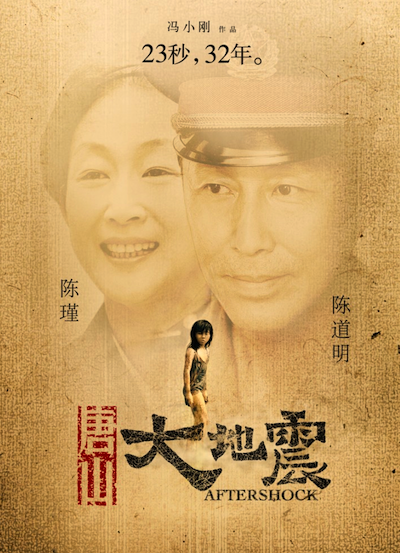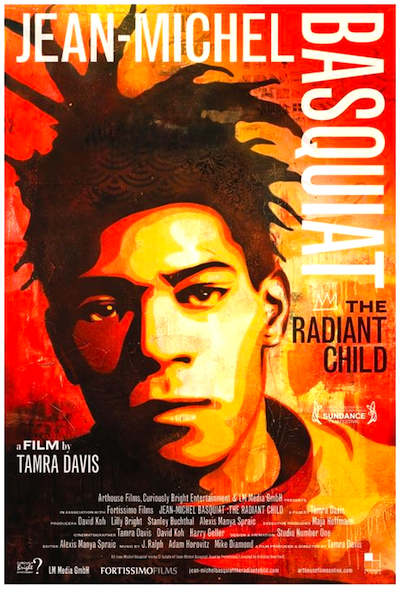By Joe Bendel. The 2008 Sichuan earthquake was not simply a tragedy—it was a scandal. Average citizens were appalled by the government’s ineffectual response and the corrupt state building practices that amplified the quake’s severity. Yet what most outraged many survivors was the extent to which the Sichuan quake and its controversies paralleled that of the 1976 Tangshan earthquake. Clearly, lessons had not been learned. However, the People’s Liberation Army and a liberal dose of revisionist history ride to the rescue in Feng Xiaogang’s disaster drama Aftershock, which China has officially submitted for Oscar consideration in the best foreign language film category.

The summer of 1976 began as a happy, peaceful time for Yuan Ni and her family. Evidently, there was no Cultural Revolution to worry about in Tangshan, but the devastating earthquake made up for it in spades. Saved by her husband at the expense of his own life, Yuan Ni is faced with a devastating Sophie’s Choice. Both her twins are trapped under a concrete slab, but to save one child, the other will surely be crushed in the process. This being China, she chooses her son Fang Da.
Cruelly, his sister Fang Deng hears her own mother consigning her to death. Yet, through some twist of fate, Fang Deng lives, discovered relatively unscathed within a mountain of corpses. Having understandable abandonment issues, the young girl claims to have no memory of the traumatic events when asked by her adopted parents, a kindly couple serving in the PLA. Years pass and much melodrama happens, but when the 2008 quake hits Sichuan, both Fang Deng and Fang Da rush to join the Tangshan survivor volunteer relief workers. Right, you should definitely be able to guess where the third act is headed from there.
 Aftershock is billed as the first commercial IMAX film produced in China. While the first fifteen minutes or so are probably pretty cool, as the Tangshan buildings fall like houses of cards, the next two hours of family drama must feel like overkill on the giant screen. Though relatively brief, Feng’s Irwin Allen scenes are tense and convincing. Indeed, he is a talented “big picture” director, but he is also something of a propagandist for the PLA. 2007’s Assembly, a well done war film that follows a grizzled army officer as he fights in the Chinese Civil War and the Korea War (against us), is a case in point.
Aftershock is billed as the first commercial IMAX film produced in China. While the first fifteen minutes or so are probably pretty cool, as the Tangshan buildings fall like houses of cards, the next two hours of family drama must feel like overkill on the giant screen. Though relatively brief, Feng’s Irwin Allen scenes are tense and convincing. Indeed, he is a talented “big picture” director, but he is also something of a propagandist for the PLA. 2007’s Assembly, a well done war film that follows a grizzled army officer as he fights in the Chinese Civil War and the Korea War (against us), is a case in point.
The young Zifeng Zhang is absolutely heartrending as Fang Deng. As the adult Fang Deng, the striking Jingchu Zhang also tugs on the heartstrings quite effectively. Unfortunately much of the plot depends on characters deliberately making life harder than necessary, which quickly taxes viewer patience. It’s as if the film hopes the overblown angst can somehow fill up the giant IMAX screen.
Of course, there was plenty of heaviness going on in China during this time, but Aftershock scrupulously ignores the death rattle of the Cultural Revolution, the downfall of the Gang of Four, and the Tiananmen Square massacre. However, scenes of Mao’s funeral are shown with reverence and PLA soldiers are regularly hailed as heroes of the Tangshan rescue effort. Granted, not every film needs to address political issues, but the lack of context in Aftershock is as glaringly obvious as a film set in 1940s Germany that never mentions the National Socialists.
Though not wholly unwatchable, thanks in large measure to its Fang Dengs, Aftershocks is definitely a flawed film. Too long and too white-washed, it is more of a curiosity than a contender in this year’s foreign language Oscar contest.
Posted on December 14th, 2010 at 10:20am.
